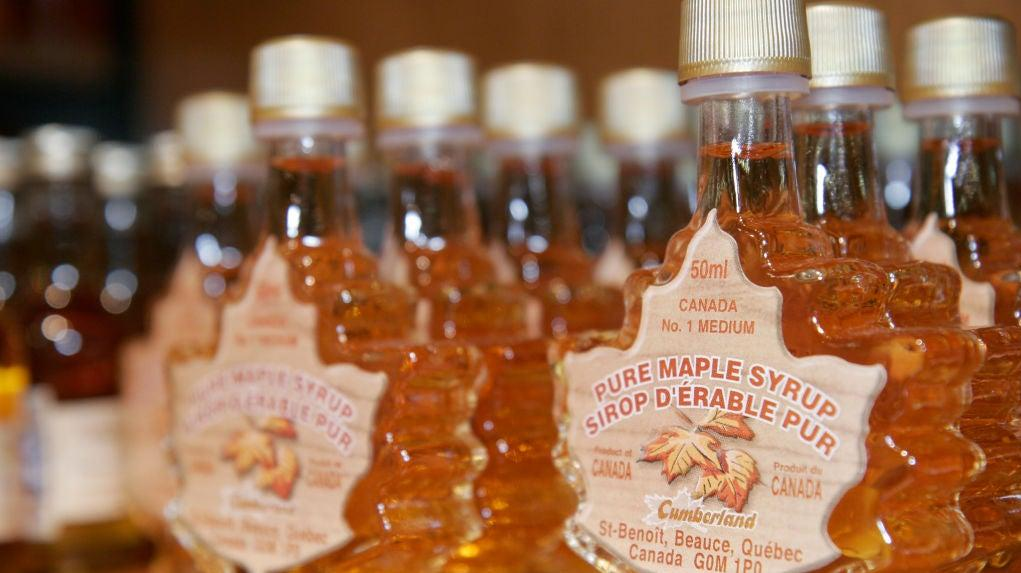Of Course Canada Has A Strategic Reserve Of Maple Syrup
Because maple syrup production was hit hard this year, Canada has released syrup from its special reserve.
I've heard of strategic oil reserves, like the one in the U.S. that we tap into when gas prices skyrocket, but Canada has a reserve of something that's more Canadian than my feeble mind can handle: maple syrup. How have I never heard of this before?
The Washington Post reports that two factors converged this year to create a maple syrup emergency: a weather-related drop in production and a pandemic-induced surge in demand. The only way to relieve the pressure was to release 50 million pounds of maple syrup from Canada's emergency stockpile. The fact that this stockpile even exists will never grow old to me. Those 50 million pounds amount to about half of the entire reserve, which is... a lot.
Quebec, which produces 73% of the world's maple syrup, was hit hard by the smaller output—production fell by about a quarter due to the weather issues. As global sales pumped up more than 36%, you can see how this quickly turned into an issue.
"This year's production was lower overall," said Kevin McCormick, a maple syrup producer in Nova Scotia, "and it really was a combination of Mother Nature being uncooperative as far as a good season and the good news about maple syrup's health benefits." Nova Scotia's maple syrup production was similarly affected by the weather.
What makes this even more interesting is that maple syrup prices are controlled by an organization called the Quebec Maple Syrup Producers (QMSP). The QSMP maintains the reserve for this very reason: to ease the impact of low production years or to match supply with higher demand.
It turns out that thieves know about the reserve, too. In 2012, a crime ring burglarized the QSMP warehouse and managed to snag $18 million worth of maple syrup, or about 9,600 barrels. The fact that anyone can steal 9,600 barrels of anything in a single heist is mind-boggling to me. How on earth do you fence that much maple syrup? Has anyone sold the film rights to this story yet?
Maple syrup requires some pretty specific conditions in order to be produced at a high rate. First off, the maple trees can't even be tapped until they're around 30-40 years old. And on top of that, harvest conditions are very specific: between midwinter and early spring, temperatures have to bounce between freezing and temperate in a single day.
"You need to have cold nights and then warm days, and that's what makes the sap run because there's pressure in the tree," says Matt Chagnon, forestry professor at the University of New Hampshire, in a 2014 YouTube video on the topic. And the demand for maple products isn't just for the mouth area of your face, but also the rest of it, as even some anti-aging creams use maple output as an ingredient.
It turns out that the entire maple syrup ecosystem is really intricate and interesting, so if you've got some time today, definitely read the Washington Post piece if you've got some time. Maple syrup is a way bigger deal than I knew. I'm going to treasure every last drop on my pancakes from now on.
